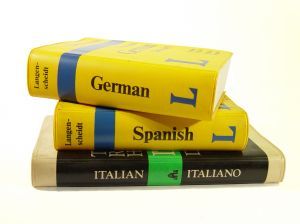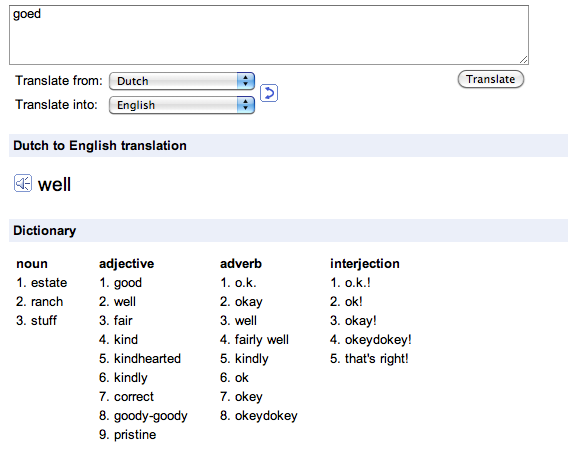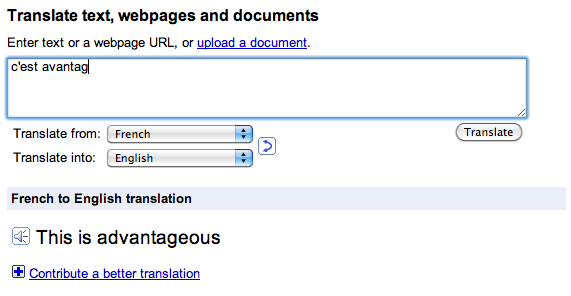Once upon a time, online translation services were a seldom seen wonder. Now, the internet is bulking with them. Suddenly you need to make a choice; whether to go with Babel Fish, WordLingo, Google Translate, or yet another new service. Great, if not for the fact that choice always creates the possibility of error. And with so many services available, people just don't know what to choose.
A lot of my friends - who are not at all tech deprived - ended up using a bad translation service. Bad: in terms of grammar, accuracy and overall user experience. This article will show four reasons why the Google Translate tool beats (most, leaving a margin for undiscovered greatness) other translation services. Note that this is not an opinionated, but a factual argument, but that shouldn't keep you from disagreeing.
1. Fluent Language Use
For most languages, but especially for English and Spanish (two of the world's most popular languages), your translations will prove incredibly fluent - more akin to spoken language, rather than the usual broken translations. This is not a coincidence.
Google collected tons of data on spoken language, and the Google Translate tool has a good sense of what sounds natural, and what does not. Even now, users can still suggest better translation alternatives - but more about that below.
As with all of these services, errors can still be made, and having a rudimentary knowledge of your goal language certainly doesn't hurt.
2. Open To Alternatives
A living language constantly keeps involving, and so should a good translation service. Knowing a translation can always be improved, Google allows you to suggest alternative translations to words or sentences. So you can do your part in keeping the quality top notch.
3. Supplying Synonyms (and Antonyms)
A well-written sentence is much like a jigsaw puzzle. There are always a few pieces left that you can slam in there, but it won't look right. Similarly, there are words that sound better in context than others, even if they mean the same thing. Never mind the words that have a multitude of unrelated translations.
If you translate a word in the Google Translate tool, you'll often get more than you bargained for. In a good way. Supplementing the most popular translation is a list of synonyms; alternative words with a similar meaning. Sometimes, although admittedly seldom, you also get antonyms - words that mean the exact opposite.
Why would you need, or rather, even be interested in synonyms and acronyms? Simple. Some alternatives will sound better than others, even if they aren't the most popular ones.
4. Swift, Intuitive User Interface
Being perfectly aware that the interface is unfamiliar terrain for a factual argument, there's one aspect that wouldn't hurt to be named. I'm talking about the instant translation feature.
With the languages specified, you have to start typing to see an instant translation. Why must it be necessary to press another "˜translate' button? Because it isn't, and it certainly shouldn't. This "˜instant results' is something we see ever more often in search engines, and Google made a smart move integrating it into Google Translate. Regardless of personal preference, things like this make user interaction not only faster, but also more intuitive.
Of course, not everyone will agree with the above. If you still prefer another translation service, tell us why in the comments section below.




